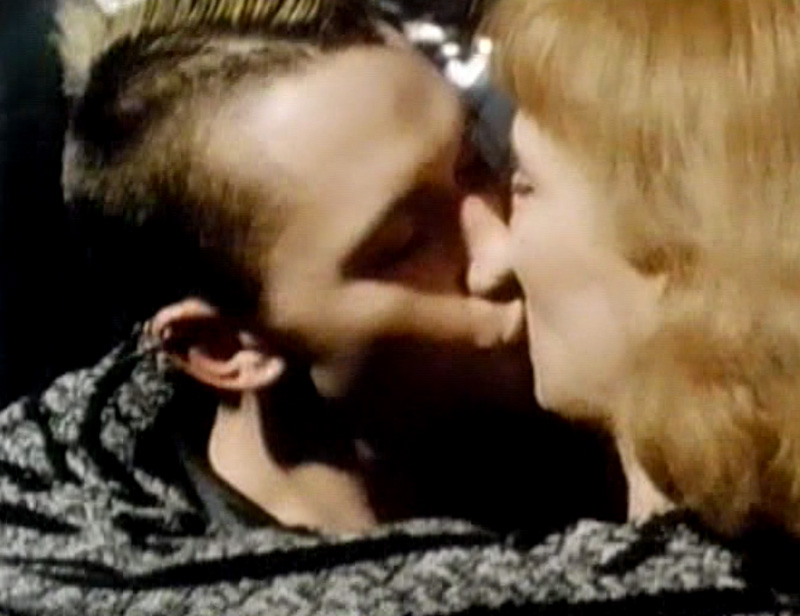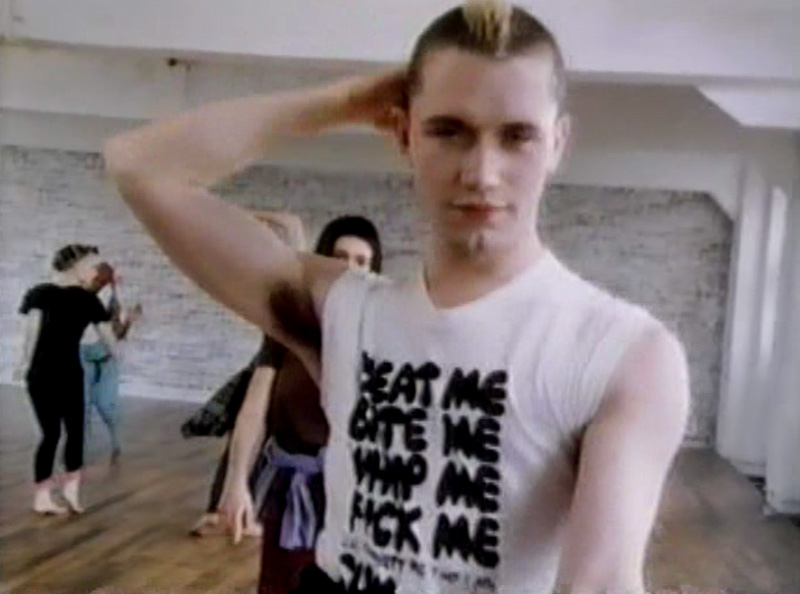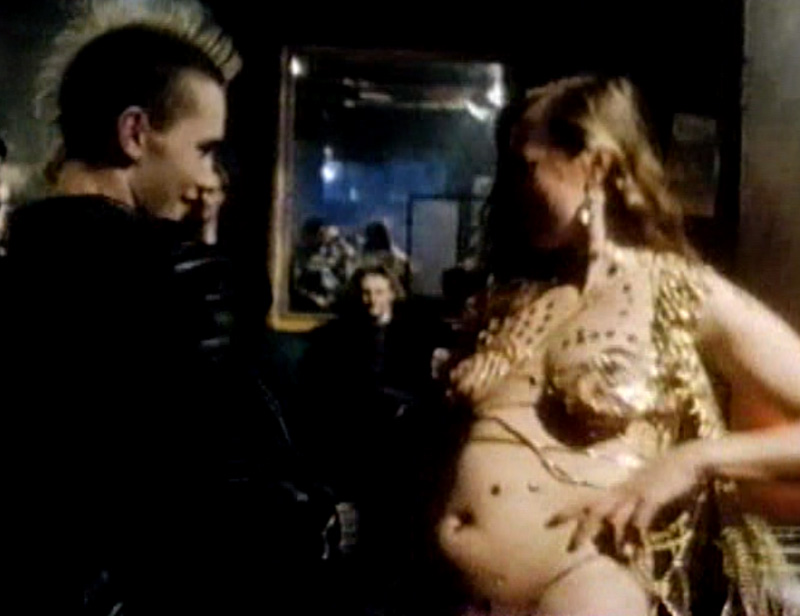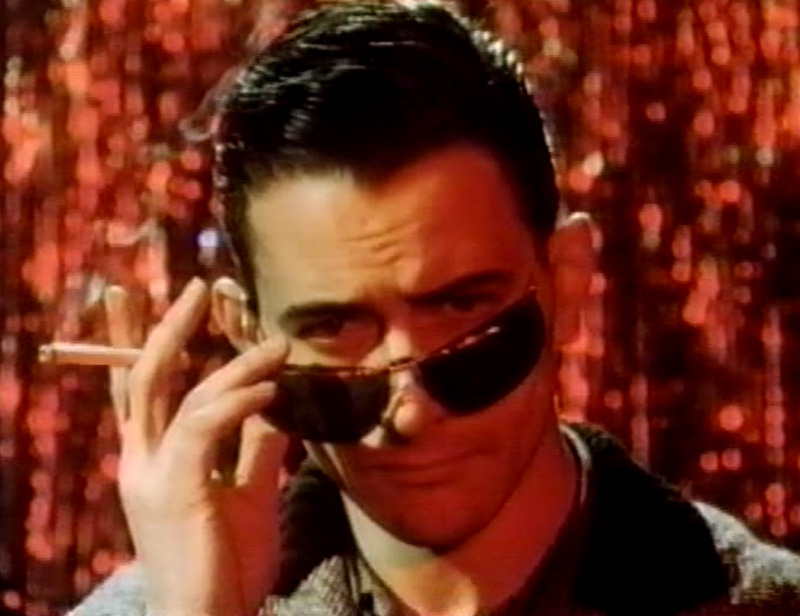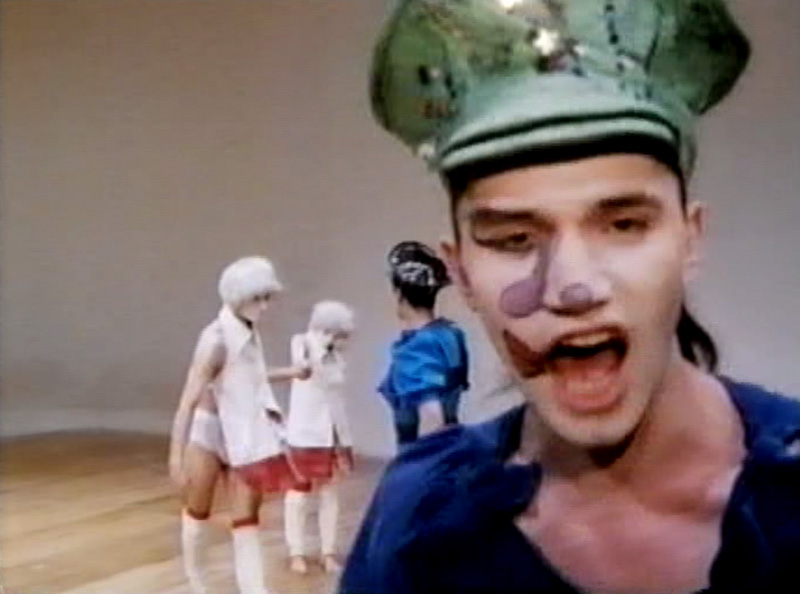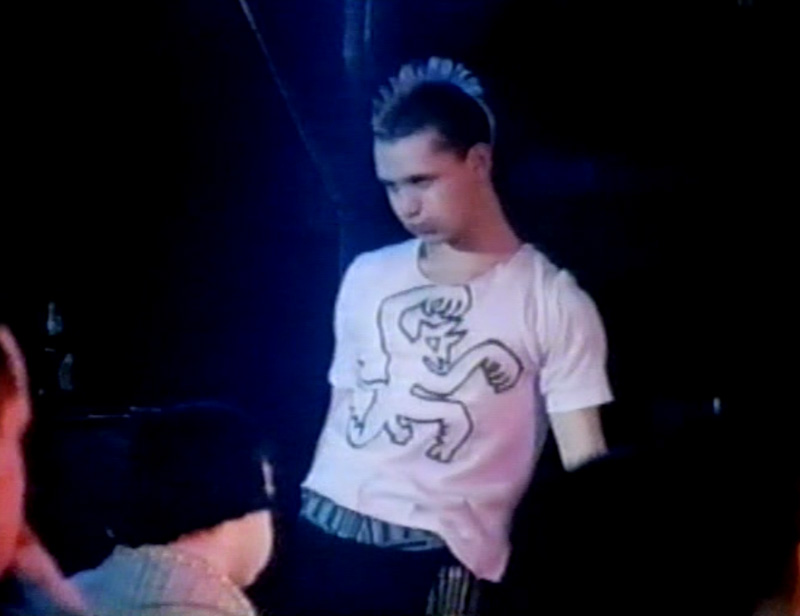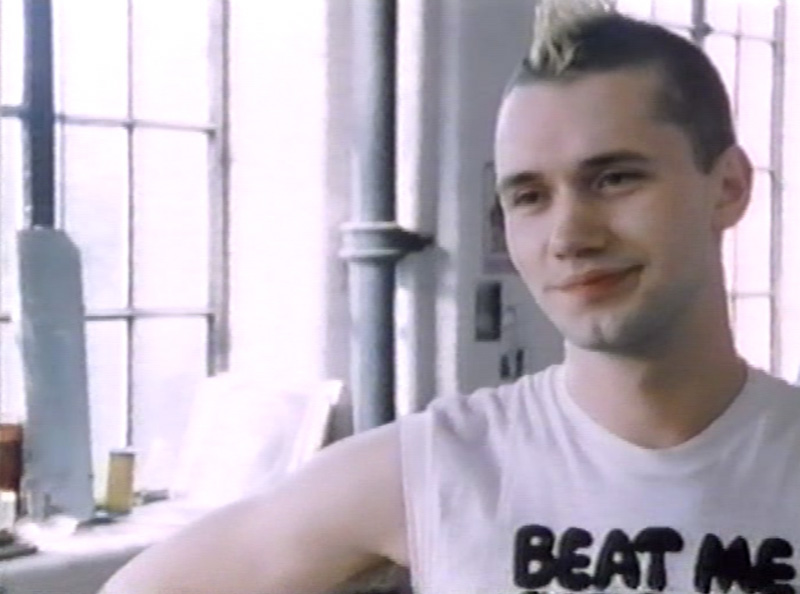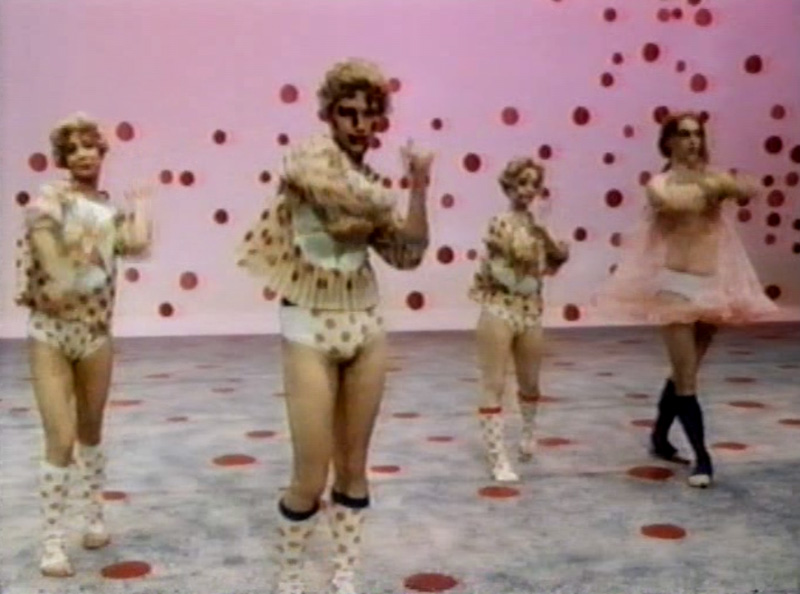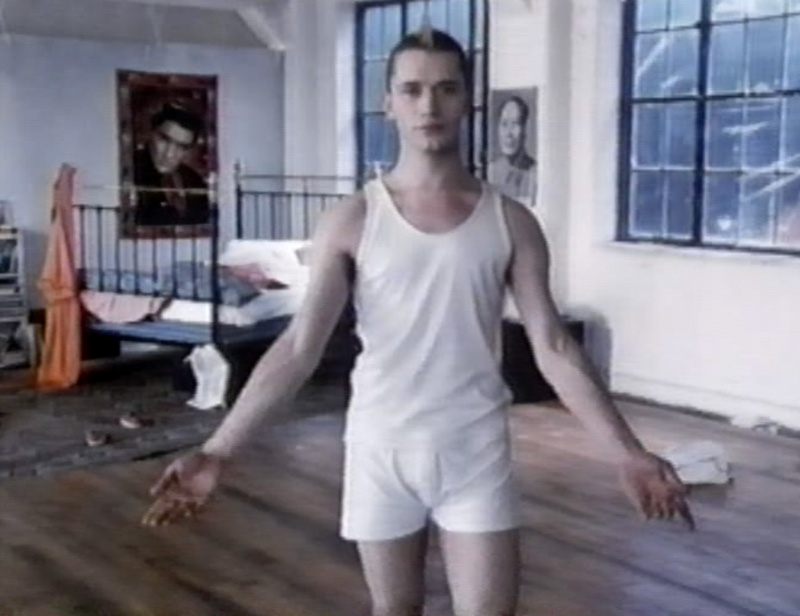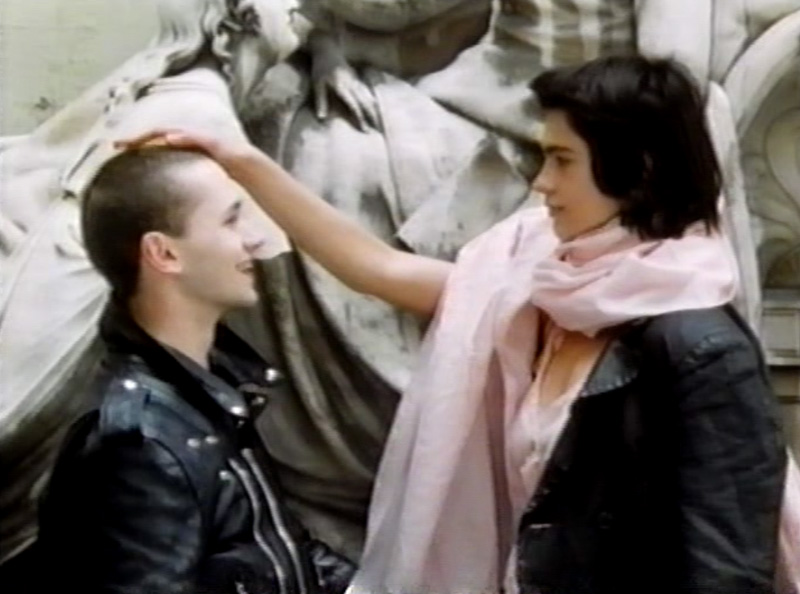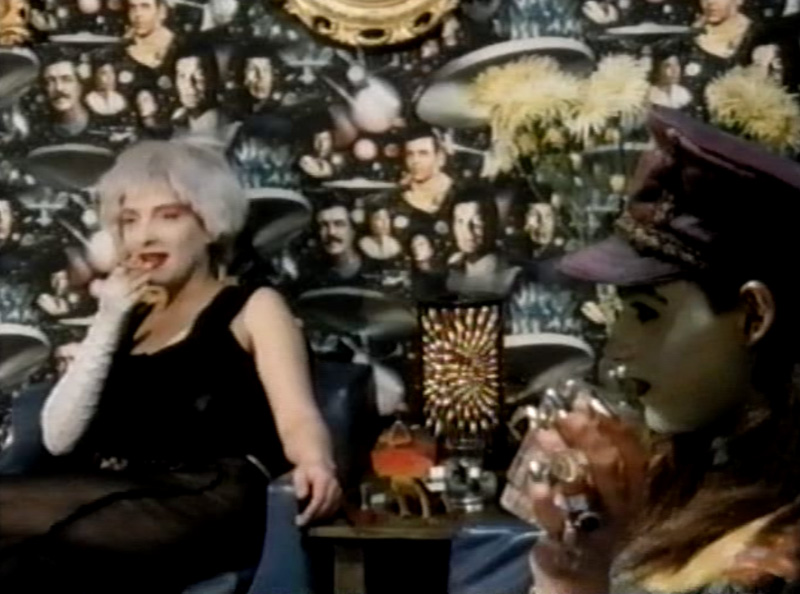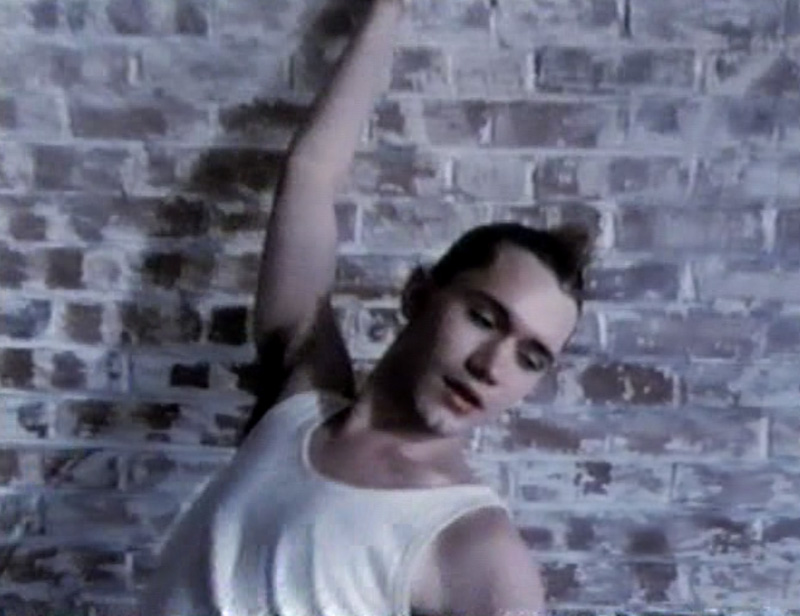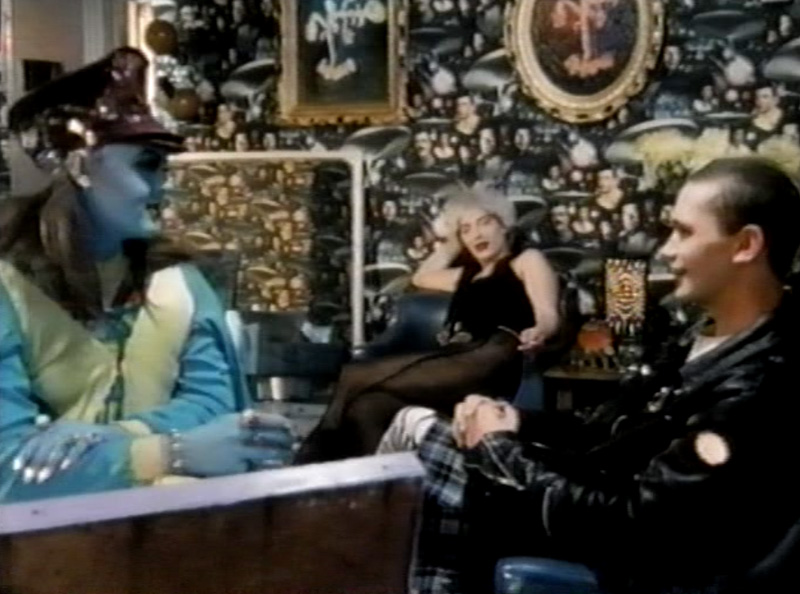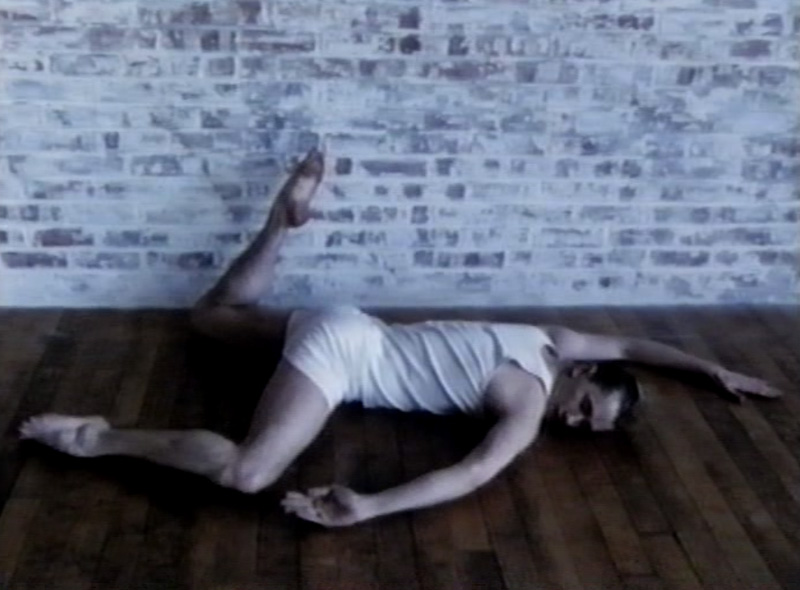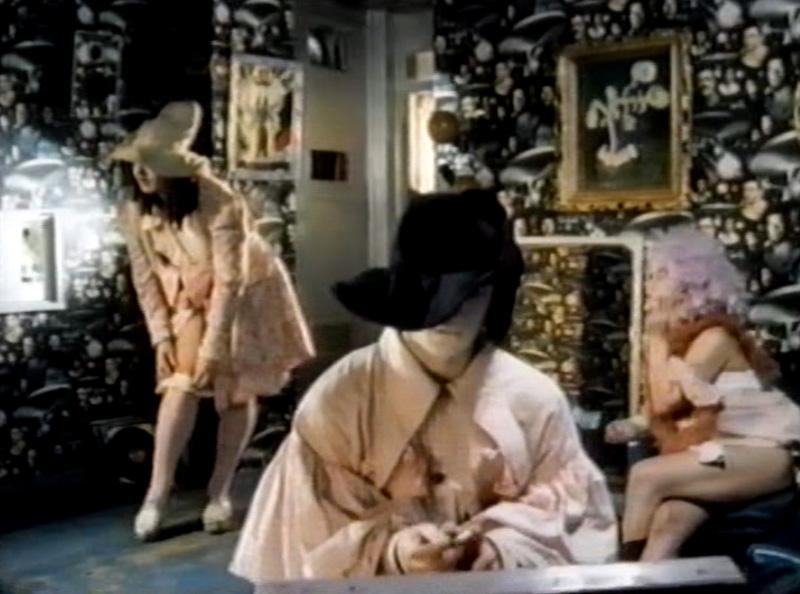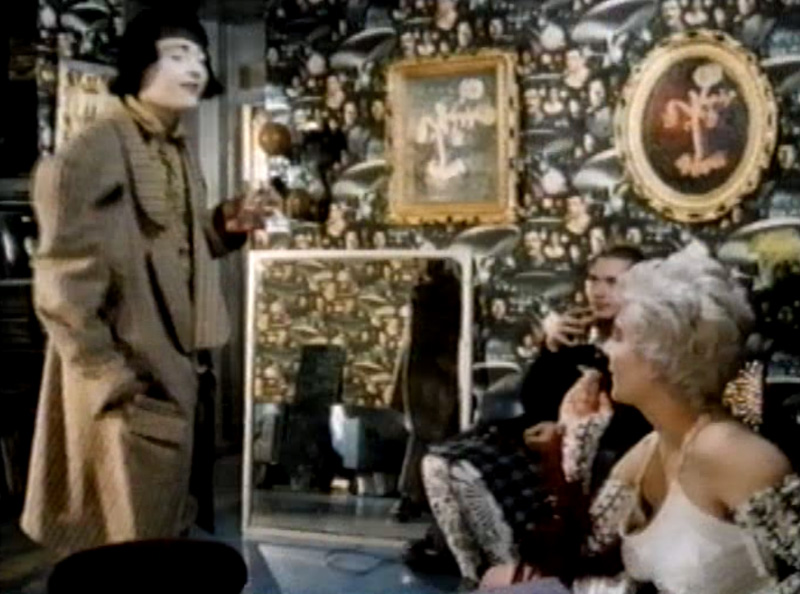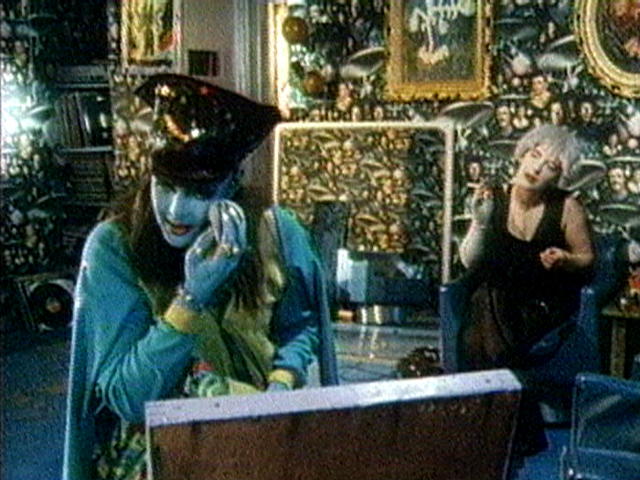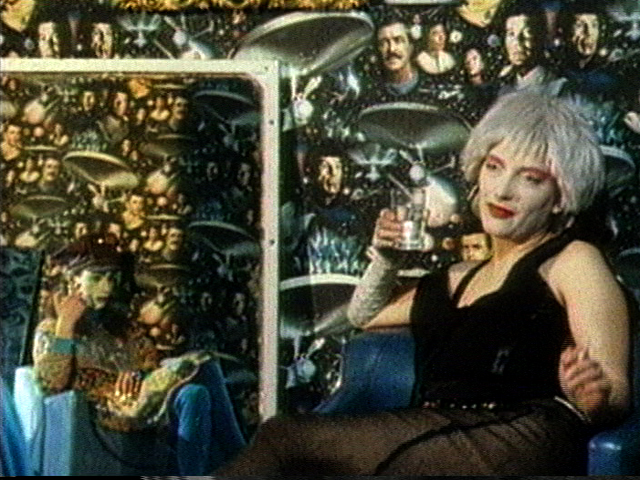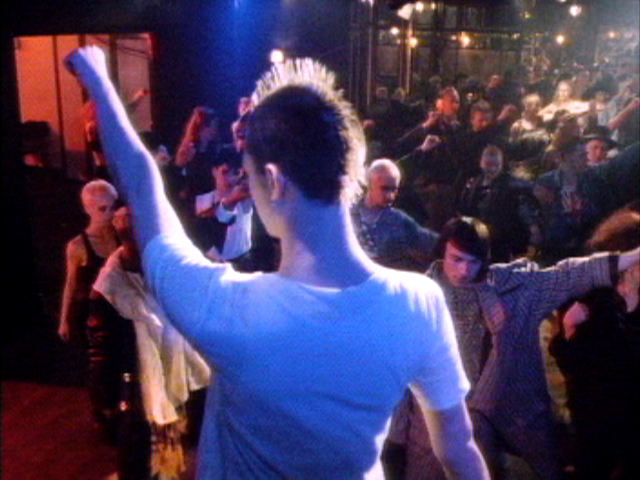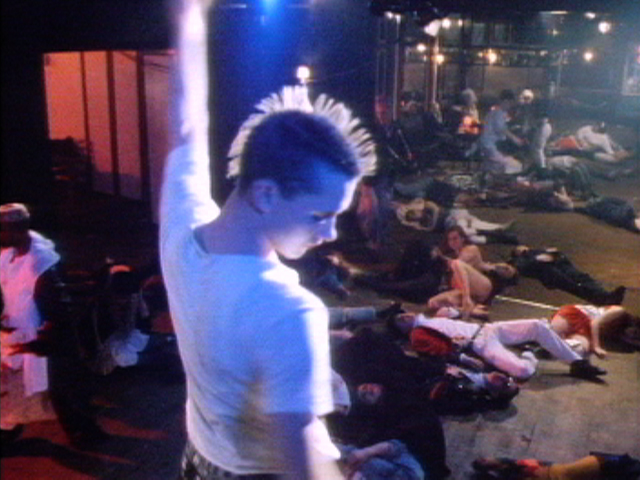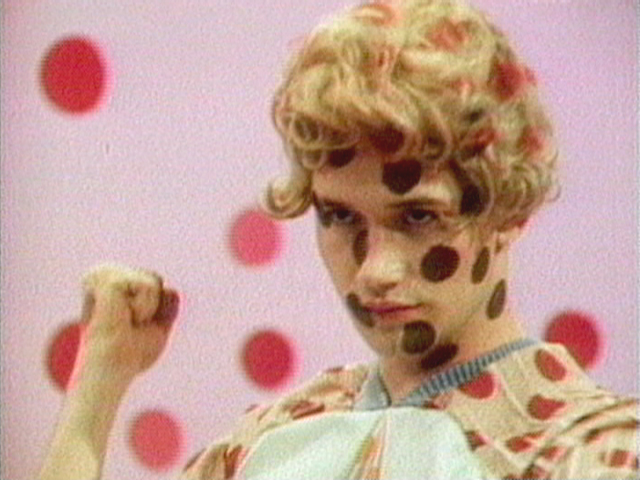Part of Winter 2008
Hail the New Puritan with Charles Atlas in Person
Wednesday, April 9, 7 pm $10/ 8 members @ Joseph Workman Theatre, 1001 Queen St. W.
+
Live Performance by Charles Atlas with Alan Licht
Friday, April 11, 9:30 pm $15/12 members @ Joseph Workman Theatre, 1001 Queen St. W.
A co-presentation with the Images Festival with support from Moving Pictures

Hail the New Puritan (1985/86 84:47)
Directed and edited by Charles Atlas
Choreographed by Michael Clark. Performed by Clark, Gaby Agis, Leslie Bryant, Matthew Hawkins, Julie Hood and Ellen van Schuylenburch.
Fabled New York video pioneer Charles Atlas, one of the premier interpreters of dance, theater and performance on video, makes his first visit to Toronto to present the Canadian premiere of Hail the New Puritan, his 1985/86 portrait of bohemian subculture in Thatcher-era London, and to perform an innovative live video processing with improvised sound by Alan Licht. Hail the New Puritan depicts a fictionalized day-in-the-life of brilliant, 23-year-old glam-punk choreographer Michael Clark from his mid-day wake up through to bedtime at dawn. In between, Clark rehearses his company, is interviewed by a journalist, stages several dances and lustily unwinds with friends. Throughout, Atlas intersperses shots of London streets, following a wandering young man who embodies the dispossessed Britain. Hail the New Puritan features appearances by key characters of the period such as British dance celebrity Michael Clark and punk drag legend Leigh Bowery as well as Grayson Perry, Brix and Mark E. Smith, with music by Glenn Branca, The Fall and Bruce Gilbert (of Wire). Hail the New Puritan was recently restored to serve as a centrepiece to the comprehensive Charles Atlas retrospective at the Tate Modern in 2006.
“Neither documentary nor fantasy but a dynamic hybrid of the two, the seminal videodance Hail the New Puritan juxtaposes the ballet-based but punk-fueled choreographies of Scottish dance sensation Michael Clark with the fabulous excesses of the 80s London scene that spawned him. Atlas’ simulated day-in-the-life approach shows Clark and his dancers rehearsing, performing and marking time between those two modalities. It also allows for a dizzying array of colourful cameos from the likes of performance artist Leigh Bowery, The Fall’s Mark E. Smith, artist Grayson Perry and a multitude of London scenesters. It is an unsentimental yet loving glimpse at a sub-cultural landscape that no longer exists yet still remains inspirational to contemporary artists in many media. Atlas’ heady blend of artifice and cinema verité also pays solid tribute to the controversial but very real genius of Clark who was 23 when the film was shot. Clark’s inventive dances fluidly interweave the narrative with varying degrees of theatricality; at times the staginess is wittily flamboyant; at others the choreography is as simple as getting undressed for bed after a night in the clubs. Atlas frames both with considerable sensitivity and an eye for the beautiful fusing of youth, life and art. This screening marks the Canadian premiere of Hail the New Puritan, which was re-mastered to be a centerpiece of the Tate Modern’s retrospective of Atlas’ work in 2006″. (Kathleen M. Smith, Moving Pictures)
Following the screening, Kathleen M. Smith from Moving Pictures and Ben Portis from Pleasure Dome will join Charles Atlas on-stage for a free-ranging discussion of media and performance.
Charles Atlas is one of the premier interpreters of dance, theater and performance on video. He has transformed this genre into an original new form, a provocative and ironic collusion of narrative and fictional modes with performance documentary. In his vibrant, inventive film and video pastiches of narrative performance, he has collaborated with such international performers as Michael Clark, Leigh Bowery, John Kelly, Diamanda Galas, Marina Abramovic, Karole Armitage and Bill Irwin. Throughout his career Atlas has also been involved in live performance work as director and also as designer of sets, costumes, lighting and mixed media presentations, and has exhibited several large-scale gallery installations works. Recently, he has collaborated with musicians Christian Fennesz and Antony and the Johnsons on live performance events. For Atlas, the theatricality of dance and performance is a point of inquiry into artifice, fiction and reality. His groundbreaking early works, including Blue Studio: Five Segments (1975-76), evolved from a unique collaboration with Merce Cunningham, for whose dance company he was filmmaker-in-residence from 1978 to 1983. Atlas has also created several portraits of the late performance artist/fashion icon Leigh Bowery: the video installation Teach (1998), the short film Ms. Peanut Visits New York (1999), and the documentary feature The Legend of Leigh Bowery (2002).
Atlas’ films and videotapes have been exhibited around the world, at festivals and institutions including the Cinematheque Francaise, the Musee d’Art Moderne de la Ville de Paris, and the Centre Georges Pompidou, Paris; The Museum of Modern Art, New York; Metropolitan Museum of Art, New York; Whitney Museum of American Art, New York; the Stedelijk Museum, Amsterdam; Participant, Inc., New York and Tate Modern, London. He is the recipient of numerous awards, including a Guggenheim Foundation Fellowship and three Bessie Awards, as well as grants from the Jerome Foundation and the National Endowment for the Arts and was recently presented with the prestigious John Cage award, by the Foundation for Contemporary Arts, 2006. Atlas lives in New York.
Charles Atlas Live with Alan Licht
On April 11th Charles Atlas and Alan Licht create an improvised collage of image and sound in their world debut collaboration. A live video mix of sampled film footage and prepared loops is buffeted by waves of electronic volume, feedback and drone. This intense, relentlessly recurring collision of dream atmospheres is at once emotive, sensual, violent and alarming. Video performance has been an integral part of Atlas’s practice since his early days with Merce Cunningham and Nam June Paik. His most recent musical collaborators include Antony and the Johnsons and Christian Fennesz. Alan Licht is a New York musician, composer and writer. Licht’s most recent appearances in Toronto were with Michael Snow and Aki Onda in October 2006 and his group Text of Light in October 2007 (presented by Pleasure Dome and SOUNDplay). His latest book is Sound Art: Beyond Music, Between Categories, published in November 2007 by Rizzoli.
Live performance has been fundamental to Charles Atlas’s art for more than 30 years. He made his first video work, Blue Studio: Five Segments, 1975–76, with Nam June Paik and Merce Cunningham, two giants of harnessing chance procedure to real time creation. Atlas began in film. From 1978–83 he was Cunningham’s filmmaker-in-residence, during which he observed and participated in the myriad avant-garde collaborative strategies for which his dance company is renowned. In the 1980s Atlas frequently worked with the Television Laboratory at WNET-TV 13 in New York, which gave independent artists free access to industrial broadcasting and the audiences associated with that. In addition to the ways that dance brought Atlas into contact with musicians and composers, he was also an avatar of New York’s downtown music scene. His 1989 video, Put the Blood in the Music, captured Sonic Youth, John Zorn and Arto Lindsay’s Ambitious Lovers at a moment that the experimental underground was issuing a forceful challenge and irrevocable change of terms to the pop mainstream.
Lately Atlas has joyously renewed his commitment to playing with musicians, notable among them Antony and the Johnsons and Christian Fennesz. In Toronto, Atlas debuts a new collaboration with a fellow New Yorker, Alan Licht. Atlas draws on all aspects of his experience in his live video mixes. His source material consists largely of anonymous film excerpts that loop compulsively in unrequited time frames. He portrays repetitive figural and psychic gestures (or their prosthetic expressions) through a combination of feeling and appearance. Atlas deftly manipulates these stock images. Color, contrast and combination morph and dissolve through a cascade of techniques that hearken back not only to the example of Paik but the other pioneers of handmade video such as Woody and Steina Vasulka, Peter Campus and Ed Emshwhiller. Atlas’s layered, dream atmospheres can pass from sensuality to violence in a moment.
Composer, guitarist and electronic musician Alan Licht coalesces minimalism, noise and pop into waves of feedback, drone and volume washing against the solid footings of song elements. He too has a long involvement with creating sound for the moving image, and vice versa.

